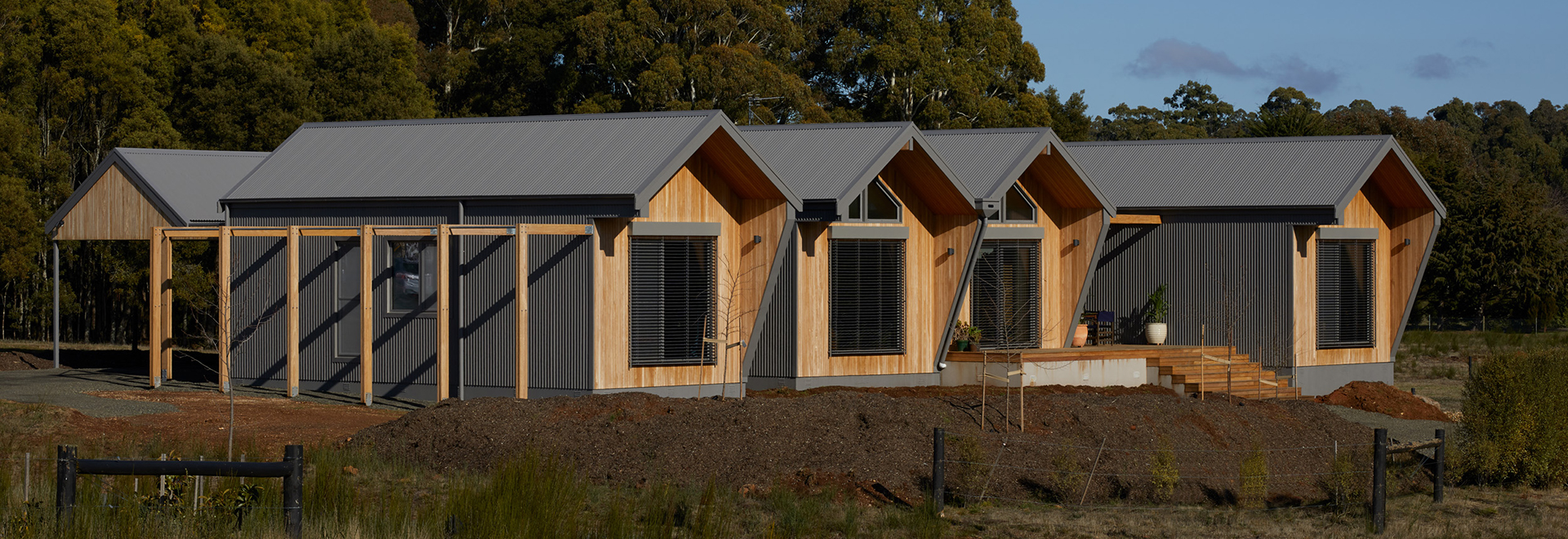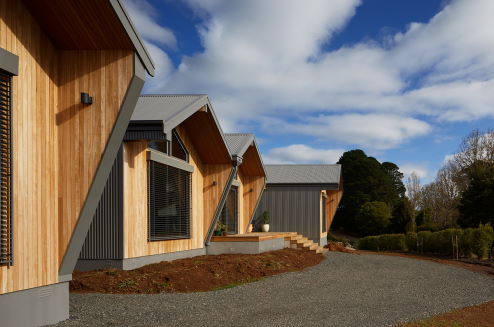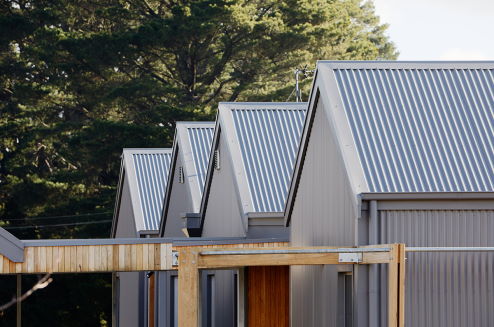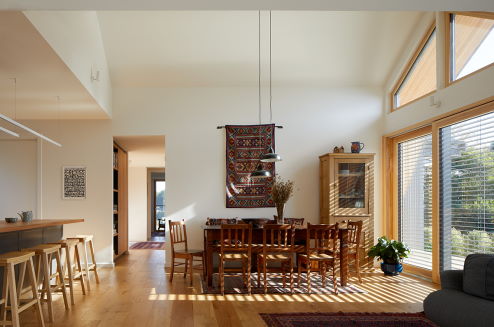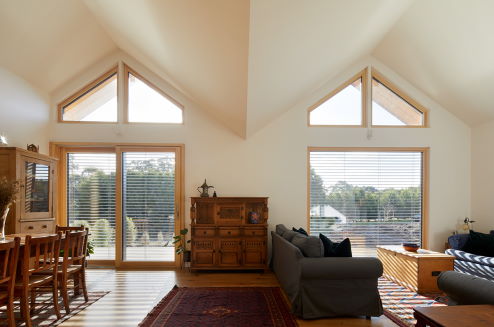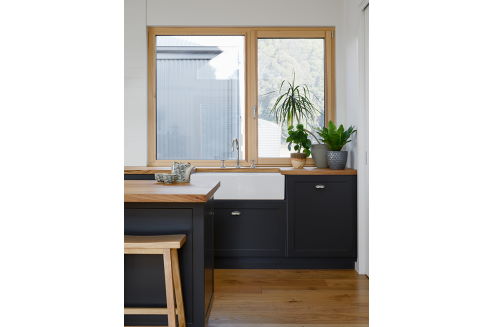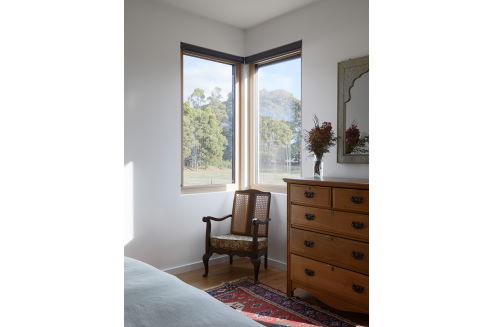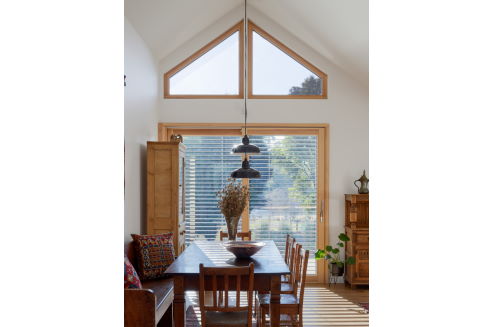Owl Woods Passive House
The Owl Woods Passive House is a leading example of an architecturally designed certified Passivhaus. This pioneering project is world’s best practice in terms of performance, efficiency, resilience, durability, quality, beauty, comfort and occupant health.
It demonstrates what is achievable, but also necessary for more climate-responsive and responsible buildings.
Project Details
Our ‘Owl Woods Passive House’ project has been recognised with multiple awards – winning the 2019 Architeam Sustainability Medal, for its outstanding sustainability credentials and the winning the Design Matters New Residential category ($500K-$1M). It was an official finalist at the Sustainability Awards and shortlisted for the HOUSES 2020 awards in the Sustainability category.
The judges praised the project, saying it, “Raises the bar for what is achievable in Sustainable Architecture and homebuilding. This project has now achieved its official Certified Passive House (CPH) status, making it the 10th single-detached CPH home in Victoria, and the 20th CPD project in all of Australia. It is a project that demonstrates that the stringent requirements to achieve this certification can work in harmony with good design. The Owl Woods Passive House pavilions reach into the landscape and contain beautiful spaces that achieve a level of energy efficiency that all Architects should aspire to in their work.”
Owl Woods Passive House has been described as a unique and beautiful example of an Architecturally-designed Passivhaus homes in Australia. The owners wanted a ‘tree-change’ home that was ‘just-enough’ in terms of size, whilst also being comfortable, sustainable, functional, flexible, healthy and beautiful. The architectural response was inspired by the surrounding bushland and farming land. The design echoes a cluster of farm-sheds or birdhouses, whilst also being reminiscent of a Scottish Village where the owners previously lived.
Located in the lovely regional Victorian town of Trentham, with an altitude of 700m above sea level, the area has weather that varies between snow in winter to summer temperatures reaching 40 degrees celsius. For the new home to be climate-responsive, comfortable, sustainable and energy-efficient, the decision was made to design and construct the home to meet international passivhaus standards. This cutting edge approach to high performance homes is still new in Australia – but the movement is growing fast as clients, architects and builders learn about the many benefits.
The Passivhaus standards allow for stable indoor temperatures and a healthy indoor environment with low running costs. This is achieved by: – Well insulated building envelope – Airtight envelope – Really great windows (that are openable for natural ventilation when the outdoor temps are desirable!) – Controlled Ventilation – Elimination of Thermal Bridges in the structure – plus orientation for solar gain in winter with appropriate shading for summer. The integration of Passivhaus standards with biophilic design enriches the experiences and wellbeing of the occupants.
Generous visual and physical connections to nature, natural light and materials are integral to the design, whilst the contemporary pavilion style layout creates diverse indoor environments for its users to experience. The locality is known as “Owl Woods”, and the home appears as though a collection of birdhouses are sitting in the native woodland. The pitched roofs stretch out to the north in a unique ‘birds-beak’ shape for summer shading. The orientation of the house is slightly north-west due to the ‘building envelope’ specified for the site – in response the roofs fold down on the western sides, forming wings to shelter each pavilion from afternoon summer sun. External blinds, and deciduous planting also help shade the house at different times of the day and year. The home takes advantage of the winter sun to provide passive heating to the centrally located living areas, and the bedroom/bathroom zones to each side, which are connected by functional linkways and courtyard spaces which perform as outdoor rooms.
The modest sized home has a couple of ‘bedrooms’ which are flexible as guest rooms or as everyday office/study/living areas. Rather than just being ‘tin sheds’, lovely radial-sawn native timber cladding was introduced to complement the grey corrugated steel, and soften the overall feel of the home and create that connection back to the surrounding bushland. Materials were chosen that are natural, healthy, durable and sustainably sourced, relating back to the Australian landscape and minimising embodied energy wherever possible. Designed to fulfill both the physical and emotional desires of its occupants, the Owl Woods Passive House is a unique blend of Biophilic Design and Passivhaus Standards of Construction. In this aspect, it really is a pioneer project for passivhaus homes in Australia.
See all our sustainable house designs here.
Team
Builder: Enerhaus
Photographer: Tatjana Plitt
Passivhaus Consultant: Detail Green
Passivhaus Certifier: Clare Parry
Client Quote
“High on our priority list was sustainability. The idea of a house with good solar orientation was suggested and this soon developed into a full blown Certified Passivhaus.”
Awards
- Sustainability Awards 2019: FINALIST Single Dwelling (New) Owl Woods Passive House
- ArchiTeam Awards 2019: WINNER Sustainability Medal Owl Woods Passive House
- HOUSES Awards 2020: SHORTLISTED Sustainability Category Owl Woods Passive House
- Design Matters National Awards 2020: WINNER Residential – New House Up to $500K-$1M Owl Woods Passive House
- BDAA Awards 2020: WINNER National Design Excellence Award – Owl Woods Passive House
- BDAA Awards 2020: WINNER New residential buildings 251 – 350 sqm and over $2,500 / sqm – Owl Woods Passive House

